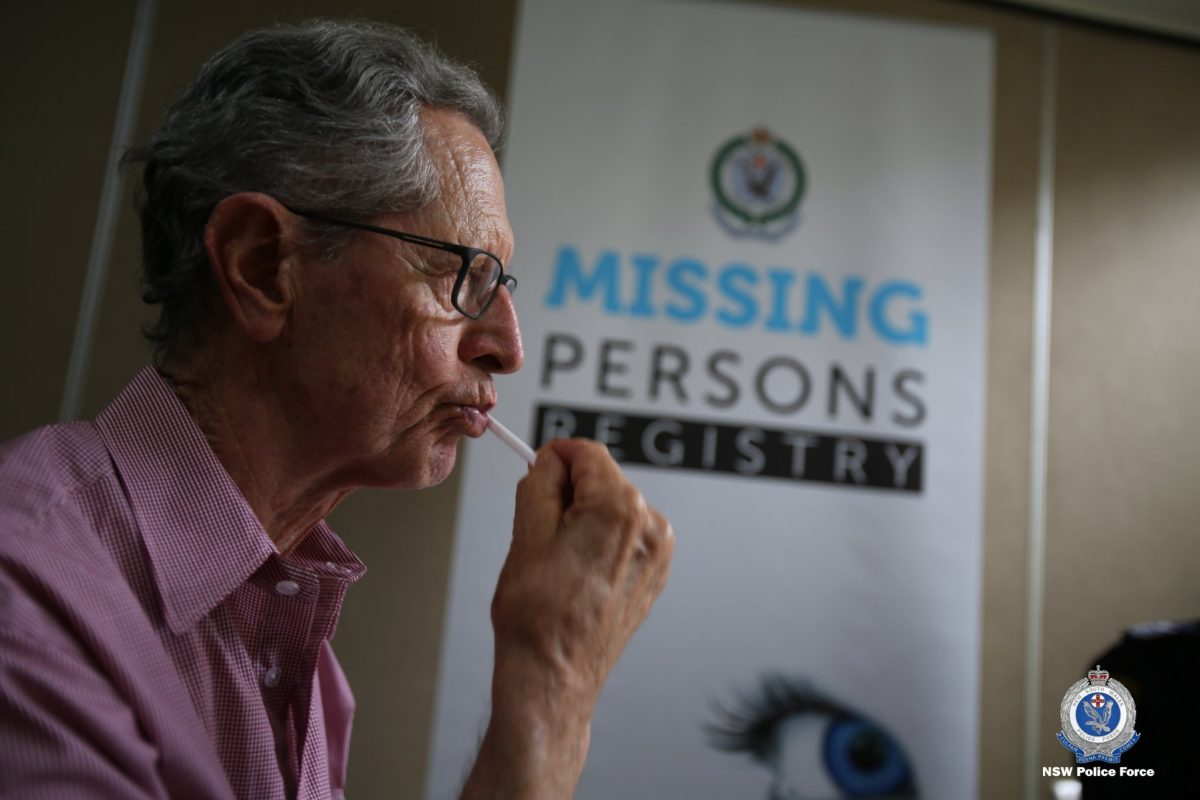
The familial DNA program aims to find links between missing persons cases and unidentified human bodies and remains. Photo: NSW Police.
Finding long-lost missing loved ones and identifying unknown human bodies and remains are the focus of a NSW Police initiative coming to Wagga Wagga and Queanbeyan.
The familial DNA collection program was designed to help detectives with ongoing investigations into historical cases.
Missing Persons Registry commander Detective Inspector Glen Browne said there were currently 751 outstanding missing persons cases in NSW and about 330 unidentified bodies.
He hoped the program would help find links between the two and bring families closure and urged people to step forward to give their DNA at upcoming pop-up collection centres.
“The success of the program relies on collecting as many familial DNA samples as possible so that they can be matched against DNA profiles obtained from unidentified bodies and human remains,” Det Insp Browne said.
“Unfortunately, like most things in 2021, our familial DNA collection program was impacted by the pandemic, and we were unable to visit a number of regional locations across the state as originally planned.
“We will also use the opportunity to interview family members and capture other data and information required to upload to the National Missing Persons Victim System (VOLMPU) database.”
In 2021 more than 100 biological relatives of missing people visited pop-up collection centres at Coffs Harbour, Port Macquarie, Nowra and Merimbula.
While no direct links were found, the information uncovered allowed detectives to eliminate some lines of inquiry and open further investigations into others.
“We don’t expect similar numbers this time, as most of our long-term missing persons come from the north and south coastal areas,” Det Insp Browne said.
“But last time, some people came forward to report people missing when we had no records, so it’s also a chance to make sure there is a record for your missing loved one.
“It may well be a family member knows of a story of someone who went missing and you’re not sure what’s being done. You can come forward, have a chat, confirm we have a report and then you can agree to give a sample that we can potentially compare to create links between missing people and unidentified remains.”
Police don’t have reliable DNA profiles for all the bodies they have found, as DNA collection was rare for cases from the 1940s up until the 1980s and the potential of DNA was largely unknown. However Det Insp Browne said there was always a chance.
“From the 90s onwards especially we would make sure we’d collect a DNA sample of a missing person right away, be it from a toothbrush or hairbrush, something to get a DNA profile from,” he said.
Giving a DNA sample involves a simple mouth swab that is sealed and sent to labs for scientists to extract a profile.
Det Insp Browne made it clear the DNA would only be used in missing persons cases.
“It can only be used in specific indexes in the database, only to be matched against unidentified bodies and human remains,” he said.
“They’re stored separately to the crime samples.”
The pop-up familial DNA collection centres will be at:
- Thursday 14 July: Senior Citizen Centre, 204-210 Tarcutta St, Wagga Wagga, from 9 am to 3 pm
- Friday 15 July: AXIS Youth Centre, corner of Campbell and Park Streets, Queanbeyan, from 11 am to 4 pm
The program will also visit a number of Sydney, Wollongong and Newcastle locations next month.







